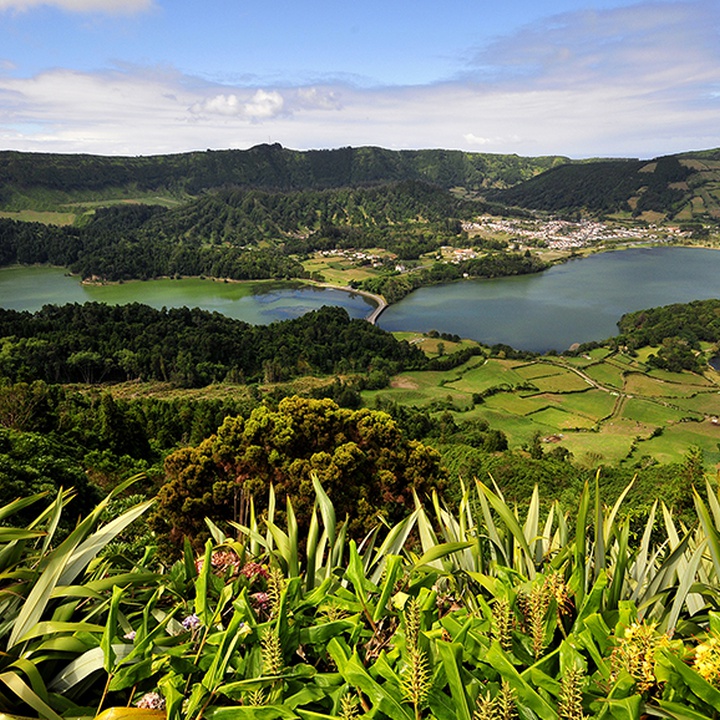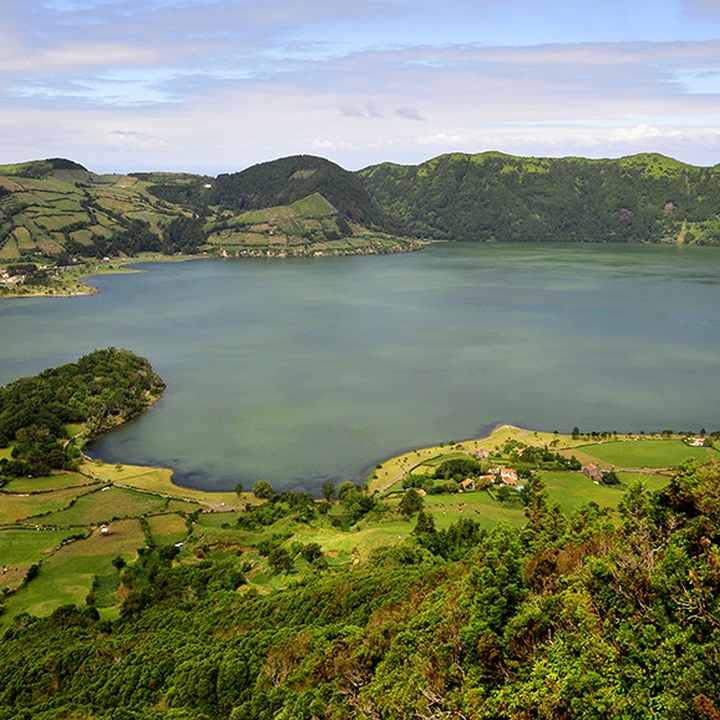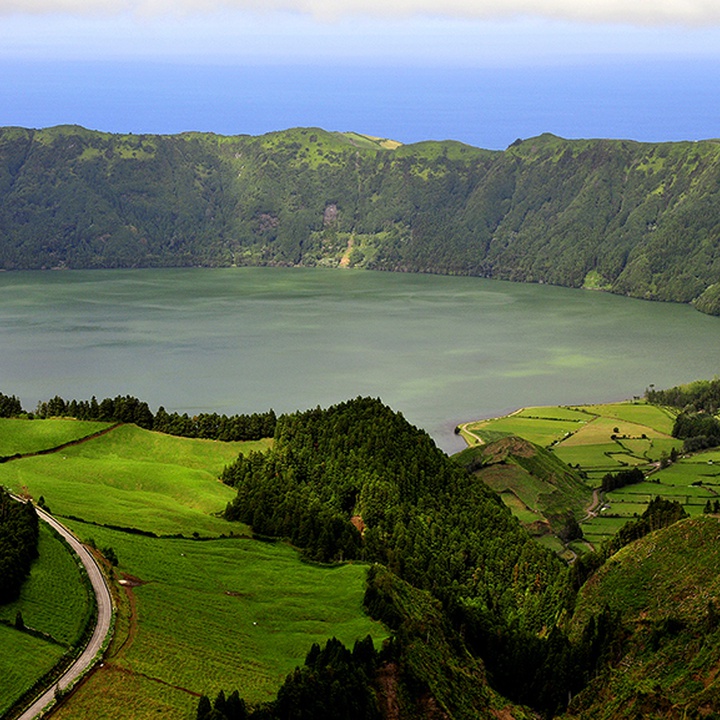Text size:
Sete Cidades
Protected Landscape Area
This protected area is at the west end of São Miguel and occupies about 2173 hectares.
The diversity of the landscape, the high level of water resources, the presence of protected flora and fauna and the priority habitats of this area reflect the combination of natural values with human activities.
The area is dominated by the large Sete Cidades Volcano, which presents a huge collapse caldera with an average diameter of 5.3 kilometres, a maximum depth of about 630 metres and probably formed around 36 thousand years ago. After the formation of the caldera, occurred inside about 15 explosive eruptions. The last of these eruptions took place around 1439, in Caldeira Seca.
The largest lake in the Azores, the Lagoa das Sete Cidades, consists of two distinct bodies of water, the Lagoa Azul and the Lagoa Verde. It is classified by the “Plano de Ordenamento da Bacia Hidrográfica da Lagoa das Sete Cidades” (Sete Cidades Lake Land Development and Watershed Plan) (POBHLSC), which aims to improve the quality of water and the preservation of natural resources. Inside the caldera, there are still the lakes of Santiago and Rasa.
Located southeast of the Sete Cidades volcano caldera, the Serra Devassa volcanic ridge comprises several scoria cone alignments, generally from northwest to southeast, with about 15 small lakes (e.g. Carvão, Empadadas, Rasa, Éguas and Canário).
Regarding the flora stands out the presence of endemic herbaceous as the Azorean Wild Lettuce (Lactuca watsoniana), Azorean Angelica (Angelica lignescens), Azorean Dock (Rumex azoricus) and Azorean Spurge (Euphorbia stygiana subsp. stygiana).
This is also an important zone for migratory birds like the Grey Heron (Ardea cinerea) and the Coot (Fulica atra). Of resident birds, there are the endemic subspecies Azorean Goldcrest (Regulus Regulus azoricus) and Common Buzzard (Buteo buteo rothschildi).
In the waters of the lakes, there are several introduced species such as the Eurasian Carp (Cyprinus carpio), Northern Pike (Esox lucius) and Red Swamp Crayfish (Procambarus clarkii).
Apart from the many viewpoints, throughout this zone are the following walking trails: Vista do Rei – Sete Cidades (PR03SMI), Mata do Canário – Sete Cidades (PR04SMI) and Serra Devassa (PRC05SMI).
This protected area is classified as a Ramsar Site under the Convention on Wetlands and integrates a geosite of the Azores UNESCO Global Geopark the CORINE Biotope environmental project.





